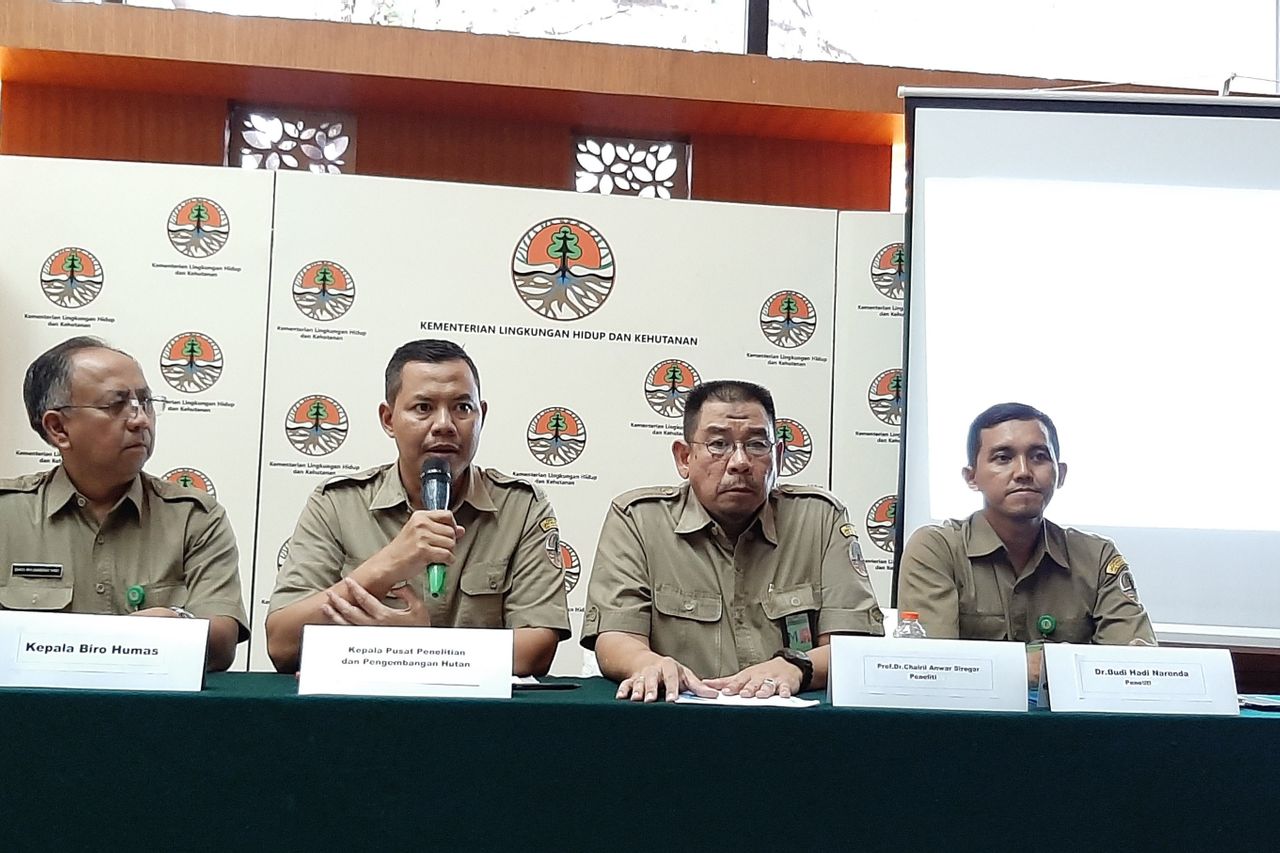KLHK's Efforts To Apply Soil Bioengineering Techniques To Prevent Landslides

JAKARTA - The Ministry of Environment and Forestry (KLHK) released a soil bioengineering technique to support preventive efforts to stabilize slopes to avoid landslides.
Researcher from the Research and Development Agency for Forestry Research and Development (KLHK), Budi Hadi Narendra, said that landslides are defined as the movement of masses of soil or rock, or a combination of both down a slope. This movement is the result of disturbing the stability of the mass of the slope constituents.
Budi explained that the stability of this slope is influenced by morphological conditions, especially the slope of the slope, the conditions of the rocks or soil that make up the slopes, and the hydrological conditions or the water system of the slope.
Meanwhile, Budi said, the trigger for landslides came from the increase in water content in the slopes due to rain. Not only that, vibrations during an earthquake can also be a trigger. In addition, the increase in loads such as buildings or trees that are too dense to exceed the shear strength of the soil.
"The cutting of the slope foot causes a decrease in the buffer force, and a rapid shrinkage of the water level in the lake or reservoir which can reduce the slope holding force," said Budi, at the Ministry of Environment and Forestry Building, Manggala Wanabakti, Jalan Gatot Subroto, Senayan, Jakarta, Tuesday, January 21. .
If you reflect on the landslide and flash flood disasters some time ago, it occurred in the area of Lebak Gedong Village and its surroundings, Lebak Gedong District, Lebak Regency and Cigudeg District, Bogor Regency.
Based on the map of the slope of the flash flood slopes and landslides in the Lebak and Bogor Regencies of the Ministry of Environment and Forestry 2020, it is known that the two disaster locations are in the upstream Ciujung River Basin, namely the Ciberang sub-watershed, as well as in the upstream Cidurian sub-watershed which has a slope of more than 30 percent.
As a form of prevention and handling of landslide and flood disasters that occurred in the Jakarta, Bogor and Banten areas, the Minister of Environment and Forestry Siti Nurbaya ordered several efforts, including spatial planning and proportional use, construction of flood control buildings, revegetation on post mine, as well as law enforcement.
Budi explained, mitigation to stabilize slopes to reduce landslide hazard can be done in two ways. First, with geographic engineering, namely soil reinforcement with technical civil construction. However, the cost is relatively expensive.
"Second, with the soil bioengineering (vegetative) method. In which plants act as the main structural component. In addition, this method can be combined with buildings or technical civil construction," he said.

Of the two methods, Budi said, in an effort to prevent landslides, the Ministry of Environment and Forestry will use the soil bioengineering method to stabilize the slopes.
Budi said, in principle, this method tries to cover the exposed slope surface with plants, so that plant roots can increase soil cohesion, as a natural slope stabilizer construction system. In addition, the roots can absorb water in the soil through the transpiration process so that it can reduce the pore water tension.
According to Budi, the role of tree roots as a gripper can also provide soil stability on slopes, although it still depends on other factors such as morphological systems, strengthening, root distribution, and root-soil interactions.
"The characteristics of the plant root system such as root density, number of roots, root depth, root branching pattern, root tilt angle, and root diameter will also affect the landslide process. To increase slope stability, the root length must be sufficient so that the root-soil can interact and grip the soil. "he explained.
In addition to vetiver grass, based on the results of KLHK research, the roots of marine bidara plants were also known to be suitable for landslide control efforts.
"Sea bidara is suitable for planting in areas prone to landslides because in addition to proper roots, this type of tree is not large in size so that it does not overload the slopes. It would be better combined with vetiver," he said.
Budi said, marine bidara combined with vetiver would form a stratified canopy, namely the vetiver crown in the lower layer and the bidara in the upper layer. A stratified header will also play a more effective role in reducing erosion.
"Apart from Bidara Laut, other plants that people are actually familiar with, such as jackfruit, rambutan, coffee. Only in the design, the types of plants that have large stems are not found on the upper slopes, mostly on the lower slopes," he said.
Meanwhile, Bidara Laut which has a trunk diameter of only about 15 cm can be planted on the upper slope to prevent the slip surface or the part that is prone to slipping.
